These Victorian Death Portraits Will SHOCK You

Disclosure: I may receive commission for items purchased through links. This helps keep our site free to readers.
Haven’t heard of Victorian death portraits? Be prepared to roll over in your grave…these eerie images will shock you.
*
Halloween enthusiasts everywhere really, really love the dead.
Except when they’re really, really dead.
While we may adore the annual taboo-busting festival, actual death just, well…creeps us out.
But Victorians took a different view. They utilized the eerie art of post-mortem photography to dress up, position and memorialize deceased loved ones.
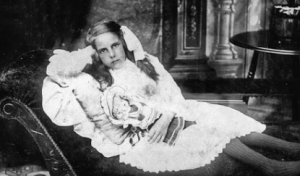
Why Did They Do It?
When we lose a dear friend or beloved family member today, the last thing we want to do is take a picture of him or her afterward.
But Victorians didn’t see things this way. Far from being morbid or shocking, post-mortem photographs – otherwise known as memento mori – were a loving way of remembering the dead.
In an age when there were no cell phones, no digital cameras, and no selfies, photographs were harder to come by.
In the Victorian era, ironically, the only time you had your picture taken in your life might be after you were dead.

How the Art Began
The invention of Daguerreotype photography meant that for the first time, people were able to procure exact images of themselves.
Invented in 1839, the Daguerreotype was slower than today’s cameras. That meant the subject needed to be very still to reduce blurriness.
But individuals who weren’t moving at all quickly became one of the most popular subject categories to photograph.

People quickly realized that with photography, they could capture their loved ones one last time. Almost immediately following the release of Daguerreotype technology, post-mortem photography – also called memorial portraiture – became a trend.

Memorialization for the Common Man
The heyday of post-mortem photography was between approximately 1860 and 1915.
In the beginning, Daguerrotypes and contemporary imaging, including glass-negative photography, were expensive processes.
However, when cheaper tintype technology became available in the 1860s, many average Americans and Europeans could now afford at least one photo during their lifetime.
It was this ease of use, and on the wallet, that made post-death photos a full-blown fashion. From the 1860s onward we see many such pictures. Often these eerie images were kept on mantlepieces, on walls or in bedrooms.

They Weren’t Always Pretty
Early in the era of post-mortem photography, the dead were often posed as if the deceased were sleeping. Some images were actually quite beautiful.
But not always. Death in a position of pain, such as cramped limbs or a contorted face; partially-opened eyes; and often, the ravages of disease all contributed to images that definitely didn’t look as though the subject were merely asleep.

Richer people could afford a professional photographer and sometimes a whole team to bring the dead to life. These professionals would paint and pose the corpse into a more pleasing visage.
The poor who could afford just a photograph might simply have an image of the dead person in his or her state at the time, including partially-opened eyes, an open mouth or a stiff body position.
Preparing the Deceased for Her Film Debut
“Prettying up” a deceased individual is nothing new. The practice of adorning and sometimes, adding cosmetics to a corpse goes back many centuries and has existed in nearly every culture.

For a “viewing,” the unfortunate individual might be dressed in her Sunday best and hold or be surrounded by flowers. He or she might be set up on a bed or bench decorated with pillows. Infants were often dressed in their prettiest nightgowns (boys and girls alike).
Various types of makeup might be used, and the hands were often placed on the chest or relaxed at the sides.
That was for a quick viewing, though. Photographs were more permanent. That meant more stringent artistic measures needed to be applied.
Dressing, Propping and Positioning
Though it may seem horrifying to us, upper-middle class or wealthy Victorians paid for more than the usual makeup and positioning. The deceased would be posed, including propping of various body parts to achieve the desired effect.
Beforehand, the family would have dressed the deceased, usually in his or her best. Tragically, we see many such photographs of infants or young girls, generally draped in white, the color of innocence.
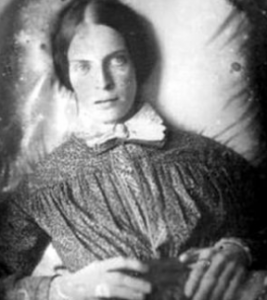
But there wasn’t always room for sentimentality when it came to post-mortem photography. The photographer couldn’t always head right to the scene.
Often, at least a day or two had gone by before the professionals arrived. During that time, decomposition may have begun, and rigor mortis would have been in full force.
Photographs still exist of teams of as many as five strong men propping and posing a corpse, possibly having broken various joints in order to reposition them.
Cosmetic Measures
To combat these issues, areas of the body that had blackened or were otherwise unsightly – such as the hands – might be hidden or gloved. Eyes might be glued or discretely stitched shut.
A truly artistic, but extremely eerie, touch was the new art of painting “eyes” onto the deceased’s eyelids.
Death pallor isn’t generally attractive. Darkening or greyishness due to pooling of blood on certain areas of the body are a dead giveaway. Other areas turn pale or ashy, leaving skin tone oddly uneven.
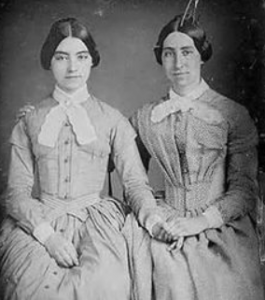
Heavy makeup was often applied to even out the skin. Similar techniques still used by morticians today, such as the application of natural-looking lip color and blush.
Infant photographs, though black-and-white, often show that the lips of the very young were a special area of concentration for Victorians. The rosebud look was meant to imitate life, but it looks garish to viewers today.

From Bed to Bench to Coffin
You would think the evolution of post-mortem photography meant the first memorialized dead were photographed in their coffins.
Actually, the fashion in the early part of this period was to have the deceased posed in a “sleeping” posture. The person might be on his or her back or side and placed on a bed, couch or other material-covered surface.
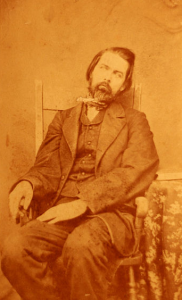
The next trend was to pose corpses in attitudes they may have undertaken (sorry) in life. Dead people sitting, standing, or holding items they’d loved were common during this period.
An adult might have one hand resting lovingly on his bicycle or holding a book; a little child might cuddle a doll or a rattle.
It was only during the later Victorian era that putting the dead into the open casket for the picture became a large-scale fad.
They Weren’t Always Alone
Often, the dead were posed with loved ones. A living child might hold a dead sibling or place her hand on the deceased’s fingers or shoulder. Parents were often in the photograph, cradling a beloved child.
Sometimes the whole family would be in the picture, surrounding the deceased. Other times siblings were lined up with the dead individual, who was posed as if also alive.

Toddlers and infants photographed as if alone often weren’t. The baby might be held up by the hands of the mother or another relative, who would be hidden behind a curtain or other prop.
Eerily, you can sometimes see the outline of the grieving parent under the camouflaging material.

The Trend Dies Out
The Victorian era officially ended when the eponymous queen died in the beginning of the 20th century.
Certain “older” traditions were considered at that time to be unfashionable, and post-mortem photography began to fade as a fad.
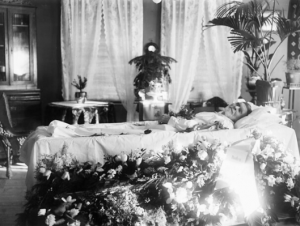
A few mourning portraits were still taken at this time, but post-mortem photography was no longer the norm by about the end of World War I (1914-1918).
The last known memorial death portraits of the period were taken in the 1940s in Iceland.
…But in Some Ways, it Lives On
We may photograph our dead today, but it is no longer the production it once was.
The process of making a corpse look more lifelike is generally performed by a mortician. Usually, the deceased is not propped up playing with toys or reclining casually on one arm.
In death portraits today, the posing is usually on one’s back with hands folded or relaxed.
But not always.

The “extreme embalming” trend of the 21st century was brought into the spotlight when Renard Matthews was positioned in a comfortable chair playing his XBox.
The deceased Matthews’ image, with his laid-back position and sunglasses, quickly went viral. Matthews’ hands were positioned on a game system controller. He wore a comfortable Boston Celtics tank top. An open package of Doritos sat on a table at Matthews’ side.
For the most part, though, today we generally let our dead rest in peace, not paparazzi.
But while we may take a somewhat distanced view of death today, Victorians saw things differently.
In yesteryear, saying goodbye could mean “seeing” that person forever…not just one final time.
Now that was a picture worth a thousand words – and a lifetime of memories.
Image Credits:
1. Reclining girl: Source unknown
2. Parents with teen daughter: Wikimedia Commons
3. (l) A grieving father and (r) a grieving mother: Sources unknown
4. Sleeping infant girl with crossed eyes and legs: George Eastman House Collection, 1850
5. Mother hugging open-eyed daughter: Thanatos archives, 1850
6. Sitting toddler with half-opened eyes: Source unknown
7. Brothers side-by-side in Sunday clothing: dailymail.co.uk
8. Young woman alone with painted eyes: Source unknown
9. Seated sisters holding hands: Source unknown
10. Man in seat being photographed: Source unknown
11. Seated man with table and book: Wikimedia Commons; 1850
12. Four standing siblings: Source unknown
13. Deceased mother with two living daughters: Source unknown
14. 20th Century young man, laid out: Fylkesarkivet i Vestland, Flickr
15. Renard Matthews: sun.co.uk

How interesting!